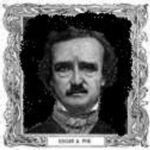10. The Colosseum is actually named the Flavian Amphitheater, but which Emperor built it?
Most people look on this awesome structure and think of it as The Colosseum (or less accurately as The Coliseum as Edgar Allen Poe’s poem shows) – many people don’t realize that it’s actually called The Flavian Amphitheater. And who ordered its construction? Caesar Vespasianus Augustus of course! So where does the name Flavian come from?
Emperor Vespasian was the founder of the Flavian Dynasty – as his original name, before becoming Emperor was Titus Flavius Vespasian. When he became ruler of the Roman Empire, he abandoned his original name in favor of Caesar Vespasianus Augustus, surrounding his name with the regal titles of the Julio-Claudian Dynasty.
Although the Colosseum is mostly named for him, it is primarily named after the Dynasty he started.
9. The 100 Years’ War was fought for how long?
It actually lasted 116 years – from 1337 to 1453. However what’s amusing is that this wasn’t a continuous point of military back and forth warfare between France and England – that would have bankrupted both nations instead of just France. It was fought between the two named kingdoms over, primarily, a dispute over English claim to the French throne, and the French territories along Normandy – traditionally England held Normandy, Aquitaine, and Calais, and used this to assert their control over the French throne itself.
The title Hundred Years’ War is not meant to be an actual chronological timeline of the battle, but rather a reference to the fact that it was a war that lasted, roughly, a hundred years or more.
8. Who discovered the New World? Was it Columbus or the Vikings?
Actually, there’s a growing thought in the archaeological community that maybe it was neither – it may very well have been the Phoenicians. According to the studies of Mark McMenamin, it is very possible that it was the Carthaginians that first sent long range ships to the Americas, and later attempted to map it on some of their coins. Furthermore, other historians and archaeologists claim they may have very well found settlements that show Phoenician architectural styles, and date just as far back, presumably sent out on an expedition by Hannibal in the hopes of having a fall back point if Rome ever swarmed over North Africa.
Officially, the history books are not ready to change, as even Mark McMenamin admits that the theory may not necessarily hold too much truth to it, but it’s certainly an interesting potentiality when something as clear cut as the discovery of an entire continent of land has been dethroned very possibly twice now.
7. What was the name of the Roman Emperor who said “Let them hate us so long as they fear us”?
If you said Caligula, you were wrong. While the man who said that was known as Caligula, that was not his name – in fact, he despised being called that, so it’s something of a point of irony that history remembers him as such. It’s akin to remembering Darth Vader as Annie in the history books, or Joseph Stalin as Joey. His actual name was Gaius Julius Caesar Augustus Germanicus, and the name Caligula actually comes from the fact that he would travel with his father’s legions, and would dress up as a miniature soldier and put on a show to help increase the morale of the men.
The term Caligula is a bastardization of Latin which basically means “Little Boot Strap”. It was a cute nickname when he was traveling with the legions, but it was something of an irritant to the mad emperor later in his life.
6. Who invented ball bearings?
Surely it was Leonardo Da Vinci right? Actually, not at first, no. It was re-invented by Da Vinci sure, but it was Gaius Julius Caesar Augustus Germanicus (Caligula) that saw the original ball bearings made. And for what scientific purpose were these revolutionary mechanical pieces made? So that a statue of a goddess named Demi he worshiped in the hopes that it would grant him incestuous powers would spin on a 360 degree axis.
He also devoted another set of ball bearings to a statue of himself, so that it could rotate the same way. When the ships, known today as the Nemi ships, were sunk, the technology of ball bearings was lost until the Renaissance.
5. Is the 2008 American Presidential Election so far showing the most diverse presidential hopefuls with a white woman and a black man?
In the words of Robert Wuhl, this is the most diverse election in the history of our country since 1872. Indeed, with the Equal Rights Party, Frederick Douglass, a renown black author, former slave, and abolitionist ran for office with Victoria Woodhull. He was nominated for the position of Vice President to the eccentric Victoria, who naturally lost the election fifty years before women had a right to vote.
4. What language did the 14th century Scottish speak?
French, naturally. Because of the heavy French influence on the British Isles, the Scottish picked up the tendency to abandon Gaellic in favor of this this more modern language. Unfortunately for the Scots, just as they were beginning to pick up on it, England began its massive anti-French movement that launched it into the Hundred Years’ War, resulting in a decline in favor of the French language. Therefore, the Scots began to slowly abandon speaking French, and rather spoke a Scottish version of Middle English.
Nevertheless, the Norse influence from Scandinavia and Norway never really died out, the Nordic traders and royalty heavily influenced the outcome of the Scottish language.
3. Where was the Holy Roman Empire based?
Primarily Germany. Although it called itself the Holy Roman Empire and claimed to be the only true successor to the throne of Rome, this was more for religious reasons than historically political. United under Charlemagne, the Holy Roman Empire was essentially the German speaking empire that dominated from the Alps to Saxony to Vienna. Its dynastic claim to Rome was not necessarily a claim to the original Roman Empire, but rather a belief and goal to represent the Roman Catholic Church.
Although called an empire, the Holy Roman Empire was amongst the most democratic of the Medieval kingdoms, and helped establish many of the customs for elections, banking, and international commerce that we know of today. However, for all of its claims and feuds with the Catholic Church, the Holy Roman Empire never actually ruled the city of Rome.
2. What was the first permanent English settlement in the New World?
If you’re thinking it was Plymouth Rock with the Pilgrims, you’re off on this one. It was actually a town called Jamestown, named for King James I in 1607, 53 years before the Pilgrims reach Plymouth. It was in essence, at first, a capitalist expedition intended to spread the name of King James and settle the New World, but its charter was later revoked, and it became an official royal colony.
1. What was the 1812 Overture written to depict?
Most Americans seem to, rather arrogantly, think the 1812 Overture by Tchaikovsky was written to depict their rather unimportant War of 1812 with the British. While this was an important moment in American history – showing that it could assert itself as an independent nation capable of fighting off the British Empire on American soil even after the Revolution – the world largely turned a blind eye to it. What else, one must wonder, could have been going on in 1812 that might illicit the attention of a Russian composer?
Why, the French invasion of Russia by Napoleon Bonaparte would be a good candidate.
The entire composition actually depicts the French invasion of the country, and all the emotions involved with it, using La Marseillaise as the 19th century equivalent of the Imperial March, and a frantic series of notes to depict battle scenes. Through music, it tells the story of Napoleon’s arrival, initial victories against the Russians, and finally the devastation he finds in Moscow as the Russians abandoned their capitol and lit it on fire. It finally climaxes in the Russian driving of Napoleon from their homeland once and for all. It has absolutely nothing to do with the American War of 1812.
Even more curiously however, Tchaikovsky himself despised the piece, and found it insulting that he be asked to write it, since it was a composition for festival of the 25th Anniversary of the coronation of Czar Alexander II. It was requested of the brilliant Tchaikovsky to write this piece so that it could be played at the fairgrounds, which he felt was simply beneath him. Therefore he strove to make it as loud and unbecoming to the ear as possible.
“I am not a concocter of festival pieces,” he said to a friend of his. He went on to say that it would be, “showy and noisy, but [without] artistic merit, because I wrote it without warmth and without love.” It was never actually played for Czar Alexander II, as he was assassinated in 1881, but it was later in 1882 at an Arts Festival – and to Tchaikovsky’s chagrin, it was incredibly well received. The cannons he put in at the end specifically to try to annoy the his listeners and the heavy instrumentation in the climax turned out to be among the most reused pieces of classical composition to date.




